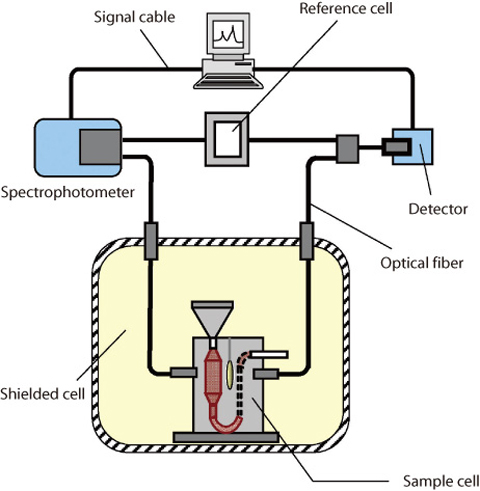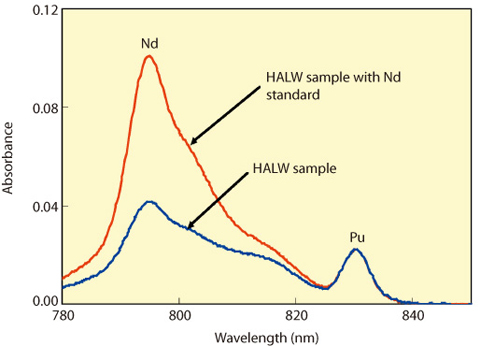
Fig.11-10 Schematic diagram of spectrophotometer using optical fiber

Fig.11-11 Absorption spectra of HALW and HALW with neodymium standard
Spent nuclear fuel from a nuclear power plant is reprocessed to recover residual uranium and newly produced plutonium. Highly radioactive liquid waste (HALW) is produced in this process. It contains small amounts of plutonium at low concentration, but it is necessary to be controlled because it is the material which must be most safeguarded. The HALW samples are transported to IAEA's Safeguards Analytical Laboratory (IAEA-SAL) for independent measurement. Therefore, it takes a few months for IAEA to obtain analytical results. Isotope dilution mass spectrometry (IDMS) has been applied to safeguards analysis to determine the plutonium in the HALW. IDMS involves a complicated procedure and requires highly skilled operators. A rapid safeguards analysis of plutonium in HALW using conventional spectrophotometry is proposed to achieve on-site safeguard measurements and overcome these disadvantages.
A schematic diagram of UV-VIS spectrophotometry system used in this work is shown in Fig.11-10. A known amount of neodymium standard was added to the sample aliquot as an internal standard. Fig.11-11 shows the absorption spectra for HALW as well as HALW with the neodymium standard. Plutonium concentration is calculated from the absorbance ratio of the neodymium and plutonium.
Validation of the proposed method was carried out with an actual HALW sample, comparing results with IDMS. The plutonium concentration ratio of values of this method and IDMS was 0.91 to 1.10. The analytical results using this method agreed well with those obtained using IDMS. The time required for an analysis was about 4 hours.
This method offers easy and rapid determination of plutonium in HALW, requiring neither complicated analytical procedures nor skilled operators. The method greatly simplifies the process of inspection, eliminating the necessity for transport of nuclear materials for off-site analyses. After a performance test carried out with inspectors from the Ministry of Education, Culture, Sports, Science and Technology (MEXT) and IAEA, the proposed method was successfully applied for rapid and independent safeguards analysis of plutonium in HALW at Tokai Reprocessing Plant, achieving the timely attainment of inspection goal.
This work was performed as a part of a support program for IAEA.
<Previous: 11-4 | Next: 12 Development of Experimental Techniques/Facilities at JAEA R&D Centers >